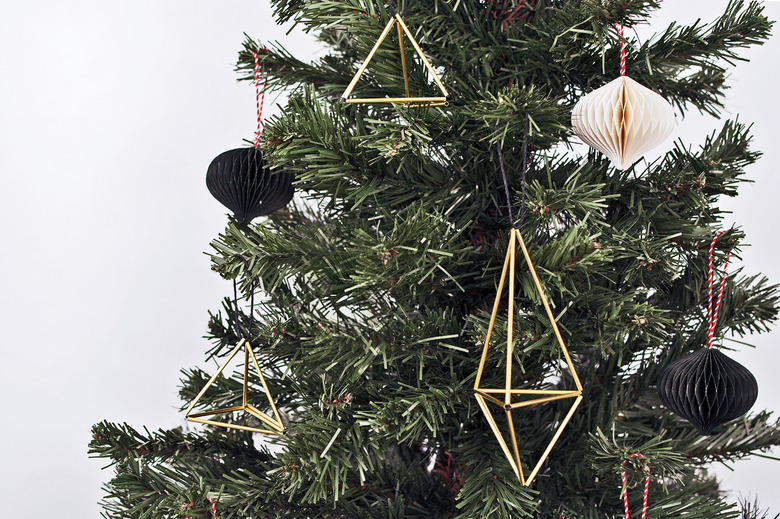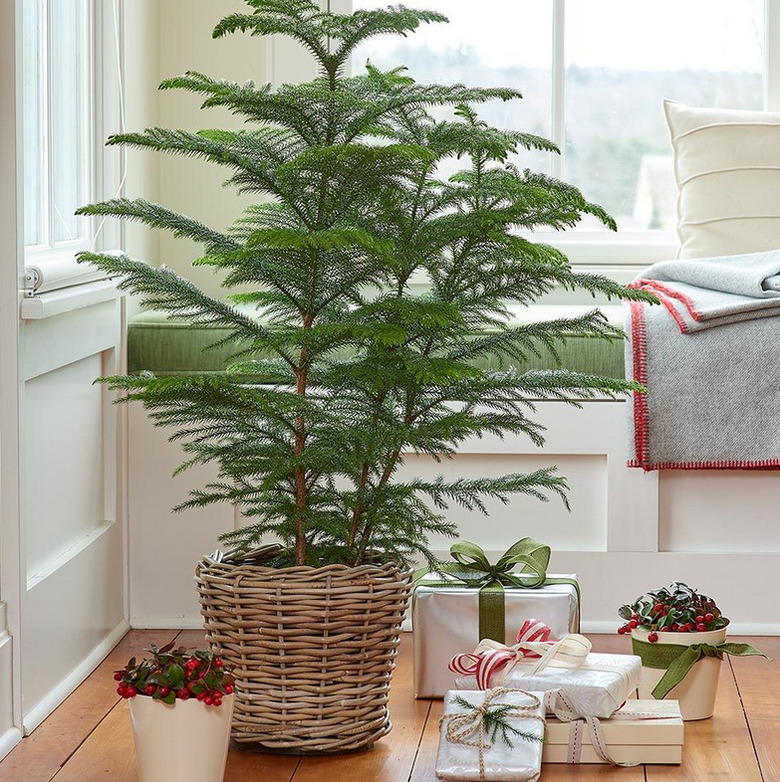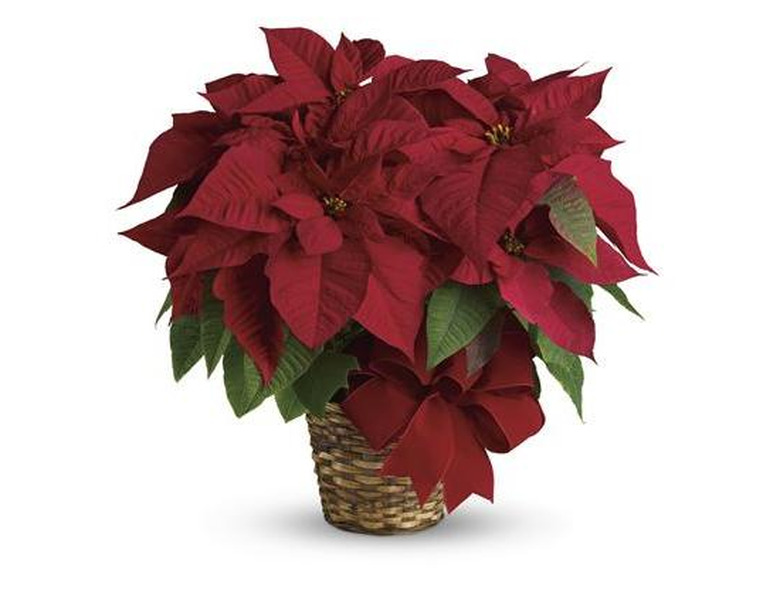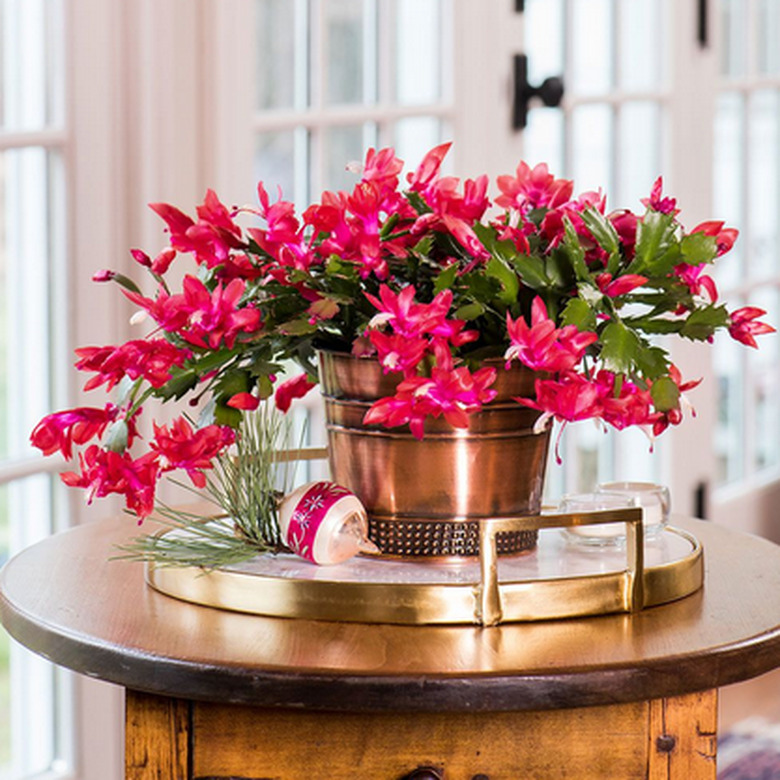How To Care For Plants That Are Popular During The Holiday Season
Norfolk Island pine, poinsettia, and Christmas cactus are houseplants that perfectly capture the holiday spirit — and whenever Christmastime is near, these plants can be seen everywhere.
Whether you buy these yourself or receive them as gifts, you'll want to keep them in tip-top shape for the holiday season and, perhaps, beyond. All three will last for years if given proper care. Curiously, all three come from the tropics, but their care requirements are somewhat different.
Norfolk Island Pine
PLANT PROFILE: This is a lush little evergreen that appears in garden stores in December. That's because Norfolk Island pines resemble the pine trees typically decorated up for Christmas. While given the common name "pine," the Norfolk Island pine (Araucaria heterophylla) isn't part of the pine family. It's a tropical plant native to an island in the South Pacific.
But looks are what count, and potted Norfolk Island pine look like exceptionally lovely little Christmas trees, with their long, soft needles and graceful sweep of branches. They are often decorated up with balls and garlands during the holiday season. But don't toss them out with the used wrapping paper after the big day has come and gone. This little tree is a gem that can live for hundreds of years.
PLANT CARE: Norfolk Island pine is not demanding, but it needs very different care from actual pine trees. It's a tropical plant, so warmth is key. You can transplant it into a sunny backyard site if you live in U.S. Department of Agriculture plant hardiness zones 10 or 11, where they can shoot up to 100 feet tall or taller. For everyone else, your delicate little tree needs an indoor location during the winter.
Indoors, put your potted Norfolks in a location that gets bright, indirect light. If the plant comes in a teeny pot, it can live there through the holidays, but after that, transplant it into a larger one, using acidic soil or mixing in peat. Young plants don't have well-developed root systems, so use a stake if needed for the first year to keep it upright. Water well when the soil is dry and increase its humidity with a pebble tray or regular misting.
Poinsettia Plants
Many people decorate for the holidays with festive poinsettia plants (Euphorbia pulcherrima). They look Christmas-y with their familiar red "flowers" and, to heighten the effect, they are often sold with shiny red or green paper wrapping the pot.
In fact, the red "petals" are actually modified red leaves called bracts that the plant uses to attract pollinators to the small yellow blossoms in their centers. Poinsettias are actually perennial plants native to the tropical forests of Mexico. They thrive outdoors in U.S. Department of Agriculture plant hardiness zones 10 and above. Indoors, they may need a larger pot to live as a houseplant.
PLANT CARE: You can keep your poinsettia healthy and happy throughout the holiday season with the right care. Water the plants thoroughly when you get them (remove that tin foil wrapper first so the pot drains), then, from that time forward, water whenever the soil feels dry. Place the pot on a sunny window in a room kept at between 65 and 75 degrees Fahrenheit during the day and at least 60 degrees at night.
You can turn your poinsettia into a year-round houseplant with a little effort. If the pot is small, you'll need to repot it, using peat-based soil with excellent drainage. Pinch back the stems in summer, and then, when October comes round, it's time to get that plant ready to bloom again. Start putting the poinsettia in absolute darkness at night. Mornings, it goes back to the window. By December, buds will have appeared and you can leave it on the windowsill to enjoy the display.
Christmas Cactus
Like the Norfolk Island pine, the Christmas cactus (Schlumbergera bridesii or Schlumbergera truncata) is misleadingly named. It is not a cactus at all but a tropical long-living plant, a type of epiphyte that lives in tree branches in the rain forests of Brazil. So if you are thinking this "cactus" likes it dry, think again. It needs a humid situation to thrive, not an arid one.
These are also good plants for the long haul, and require very easy care. Most of the year, a Christmas cactus plant sits quietly in a corner, an unassuming, succulent-looking plant with flat, segmented stems. But at Christmas time, those stems produce vivid, tubular flowers on their tips in bright shades of pink or lilac. These flowers can last a long time.
PLANT CARE: It's best to place your Christmas cactus in a bright spot that gets indirect sunshine. While regular watering is important, it's even more important not to overwater, since this can quickly kill the plant. Water only when the soil is dry, and make sure there are drain holes. If necessary, transplant it into a larger pot with excellent drainage.
Household temperatures of 70 degrees Fahrenheit during the day and 60 degrees at night work well for the blooming period. During summer, move the plant outdoors into a shady location. In fall, bring it back inside. Come October, prepare it for blooming by placing it in a cool, dim location for 30 days without water. When you bring it out, it is time to watch those buds develop.



